In a groundbreaking discovery, archaeologists working in Egypt’s famed Valley of the Kings near Luxor have uncovered an extraordinary artifact: the intricately designed throne chair of the young Pharaoh Tutankhamun and his wife, Queen Ankhesenamun. This stunning relic, adorned with gleaming gold and intricate carvings, offers a rare and intimate glimpse into the lives of ancient Egyptian royalty during the 18th Dynasty. Since the tomb’s initial discovery in 1922 by Howard Carter, Tutankhamun’s burial chamber has captivated the world with its treasures. Yet, this throne, with its unique craftsmanship and cultural significance, stands out as a masterpiece that continues to inspire awe.
The throne’s discovery not only deepens our understanding of Tutankhamun and Ankhesenamun’s relationship but also provides invaluable insights into the artistic, cultural, and religious practices of one of history’s most fascinating civilizations. This article explores the throne’s historical context, design, and significance while highlighting the ongoing research and conservation efforts ensuring its legacy endures.
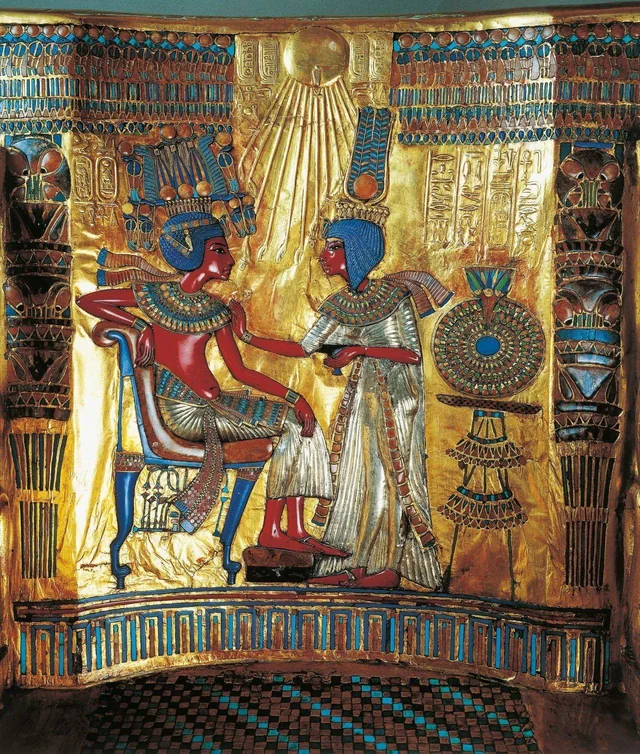
Unveiling the Royal Throne
The tomb of Tutankhamun, a treasure trove of unparalleled artifacts, remained untouched for over 3,000 years before its discovery. Among the dazzling funerary goods and personal items of the young king was this magnificent throne. Crafted from wood and adorned with shimmering gold, the throne was discovered in the tomb’s antechamber alongside other items meant to accompany Tutankhamun in the afterlife.
What makes this throne particularly remarkable is its connection to Queen Ankhesenamun. Engraved on its backrest are the cartouches of both the young king and queen, indicating it was their shared seat of power during their reign. The detailed carvings on the throne reveal an intimate bond between the couple, showing them seated together in a pose that symbolizes unity and affection. Such imagery provides a tangible connection to their lives, offering a poignant glimpse into the emotions and relationships of these long-departed royals.
A Masterpiece of Design and Craftsmanship
The throne of Tutankhamun and Ankhesenamun is a true testament to the artistry of ancient Egyptian craftsmen. Its backrest features a relief carving of the couple, depicted in the classic Egyptian style, with their profiles elegantly rendered against a frontal background. The attention to detail is extraordinary, capturing every fold of their garments, every delicate facial feature, and every piece of their ornate adornments with breathtaking precision.
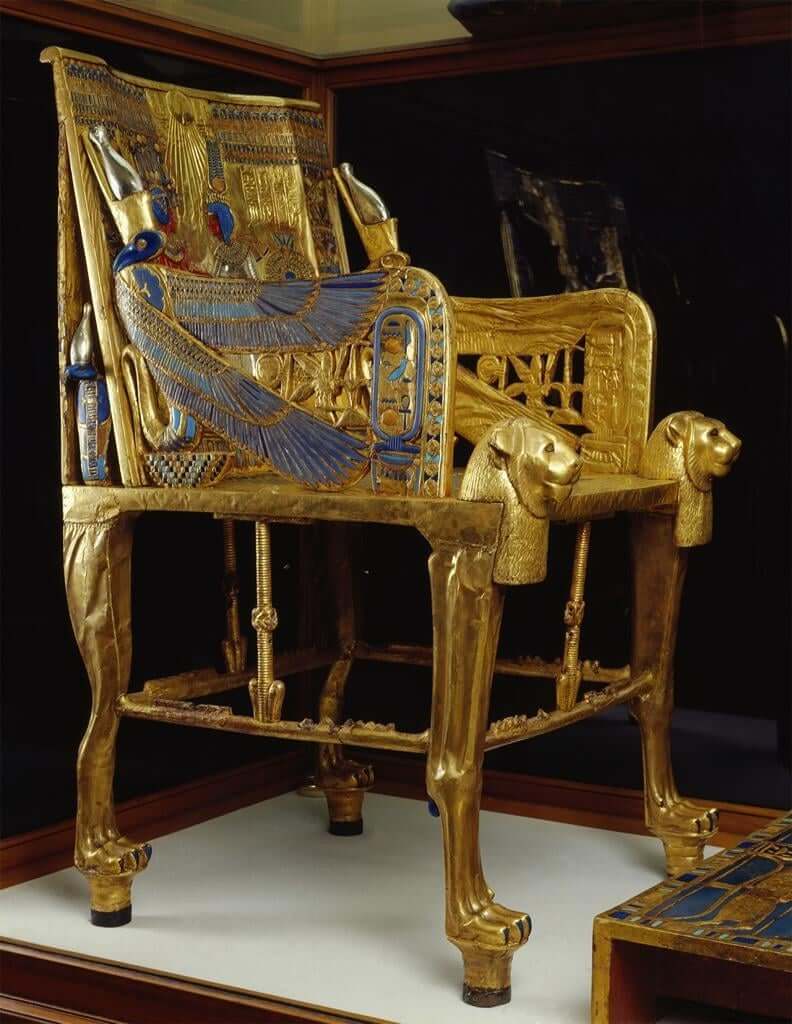
Surrounding this central carving are intricate patterns and symbols, including lotus flowers, papyrus plants, and sacred motifs that were deeply significant in Egyptian culture. Vibrant inlays of blue and green faience, combined with gleaming gold accents, enhance the throne’s visual impact, creating an artifact as dazzling as it is meaningful. The throne’s protective imagery, such as depictions of the cobra goddess Wadjet and the falcon-headed god Horus, underscores its symbolic importance, reinforcing the divine authority attributed to the pharaoh and his queen.
Historical and Cultural Significance
The throne’s discovery provides profound insights into the 18th Dynasty, a pivotal era in ancient Egyptian history. Tutankhamun, known as the “boy king,” ascended the throne during a period of political and religious upheaval. His reign, though brief, was marked by efforts to restore traditional practices disrupted by his predecessor, Akhenaten. Ankhesenamun, believed to be both his wife and half-sister, played a significant role in these efforts, as evidenced by their shared representation on the throne.
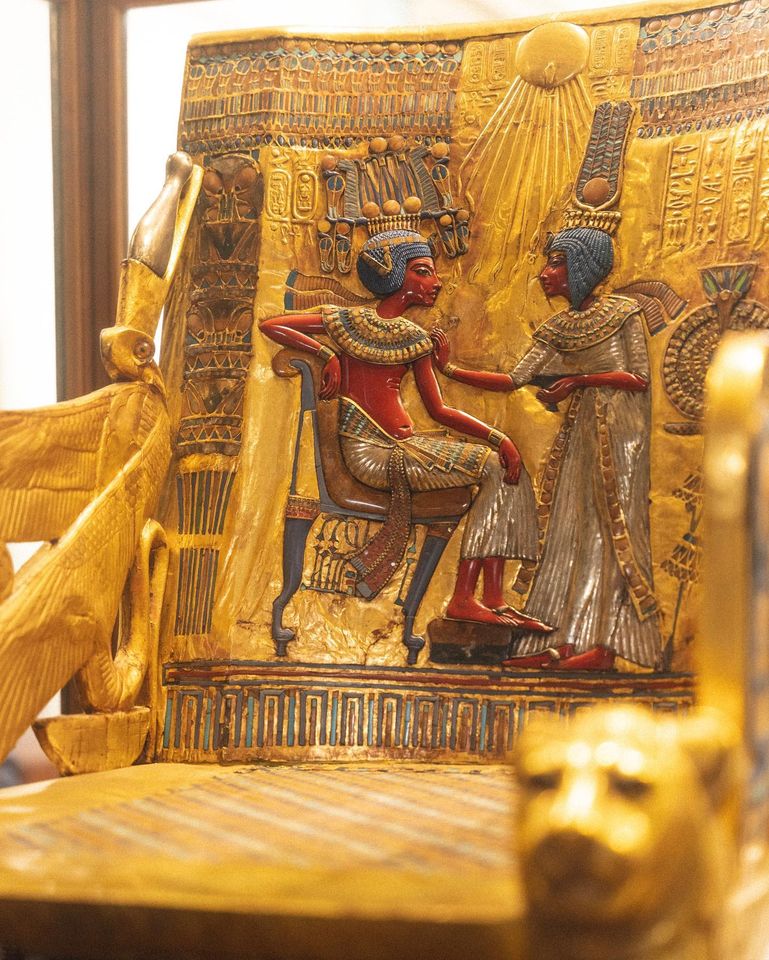
The throne’s design reflects the sacred nature of Egyptian kingship, with its protective deities and cosmic symbolism emphasizing the divine mandate of the royal couple’s rule. Its discovery enriches our understanding of the cultural and religious values of the time, highlighting the intertwined nature of governance, spirituality, and artistry in ancient Egypt.
Craftsmanship Beyond Compare
The throne is not merely a historical artifact; it is a masterpiece showcasing the technical expertise of ancient Egyptian artisans. The precise joinery, seamless integration of materials, and meticulous carving speak to a level of skill and sophistication that remains awe-inspiring. The vibrant colors and intricate details of the inlays further illustrate the remarkable craftsmanship of the era, making the throne a symbol of the artistic and cultural achievements of the 18th Dynasty.
Ongoing Research and Preservation
Since its discovery, the throne has been the focus of extensive study and conservation. Using advanced imaging techniques and material analysis, researchers have unraveled details about its construction, materials, and symbolic significance. Despite its age, the throne remains in excellent condition, allowing scholars to delve deeper into the techniques used by ancient craftsmen.
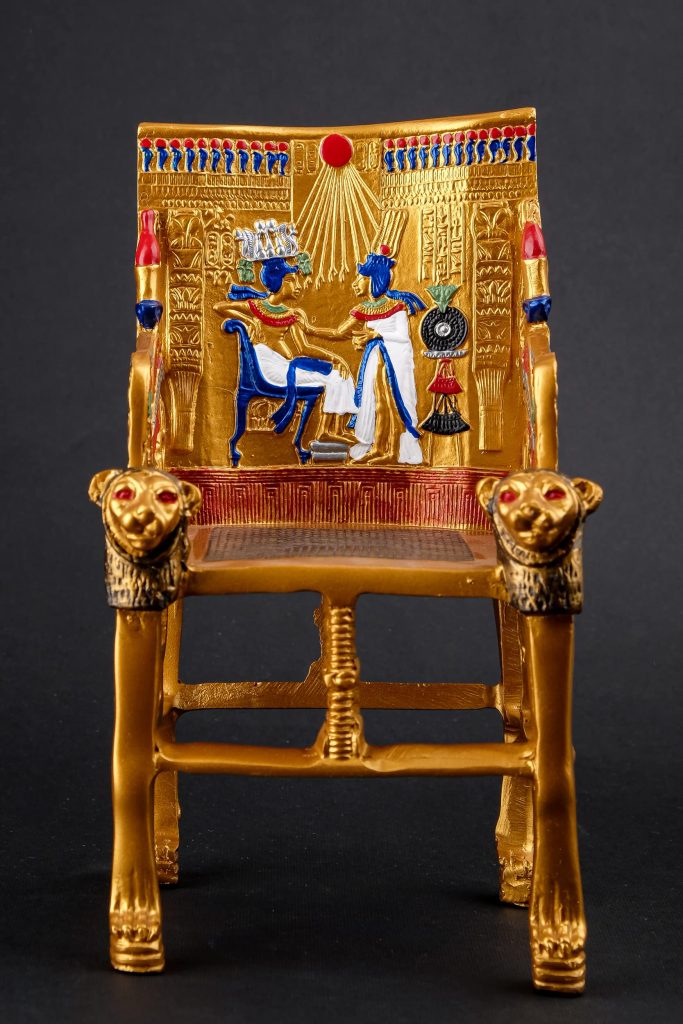
Preservation efforts include developing specialized storage and display solutions to protect the throne’s delicate materials from environmental damage. These initiatives ensure that future generations can continue to marvel at this irreplaceable artifact and learn from the insights it provides into ancient Egyptian civilization.
Public Fascination and Educational Value
The throne’s allure extends beyond the academic community, captivating the public imagination through museum exhibitions and educational programs. Its stunning design and the personal connection it offers to Tutankhamun and Ankhesenamun make it a centerpiece of ancient Egyptian history, inspiring curiosity and wonder in audiences worldwide.
A Legacy for the Ages
The throne of Tutankhamun and Ankhesenamun is more than an archaeological treasure; it is a window into a civilization that continues to captivate humanity. Its intricate artistry, cultural significance, and connection to two of history’s most enigmatic figures ensure its place as a symbol of ancient Egypt’s enduring legacy.
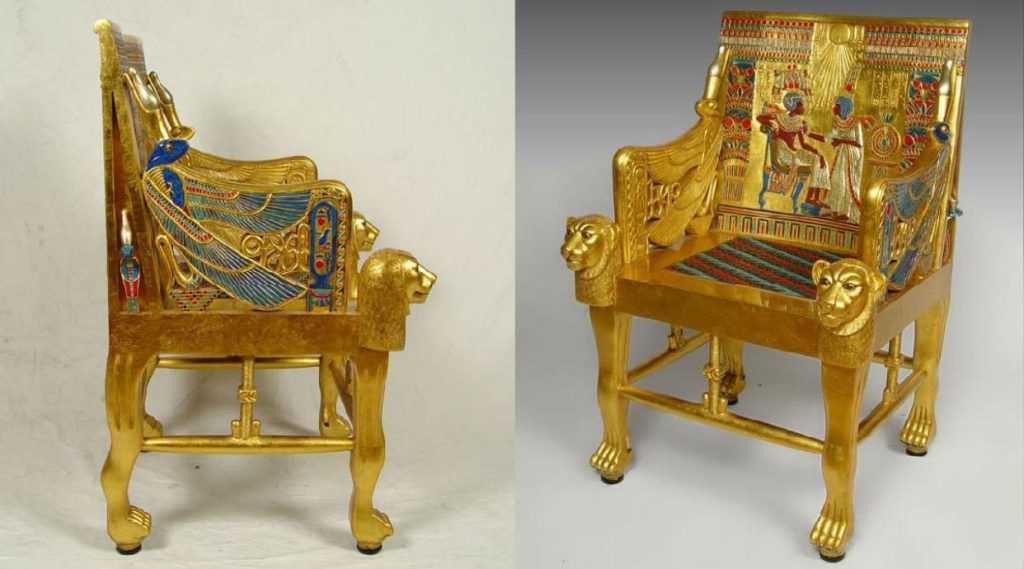
As research and conservation efforts continue, the throne reveals new insights, deepening our understanding of the cultural, religious, and artistic traditions of the 18th Dynasty. This remarkable artifact stands as a testament to the brilliance of ancient Egyptian craftsmanship and the timeless fascination it inspires in scholars and enthusiasts alike.
Through its discovery, study, and preservation, the throne of Tutankhamun and Ankhesenamun remains a beacon of history, offering lessons and inspiration for generations to come.





